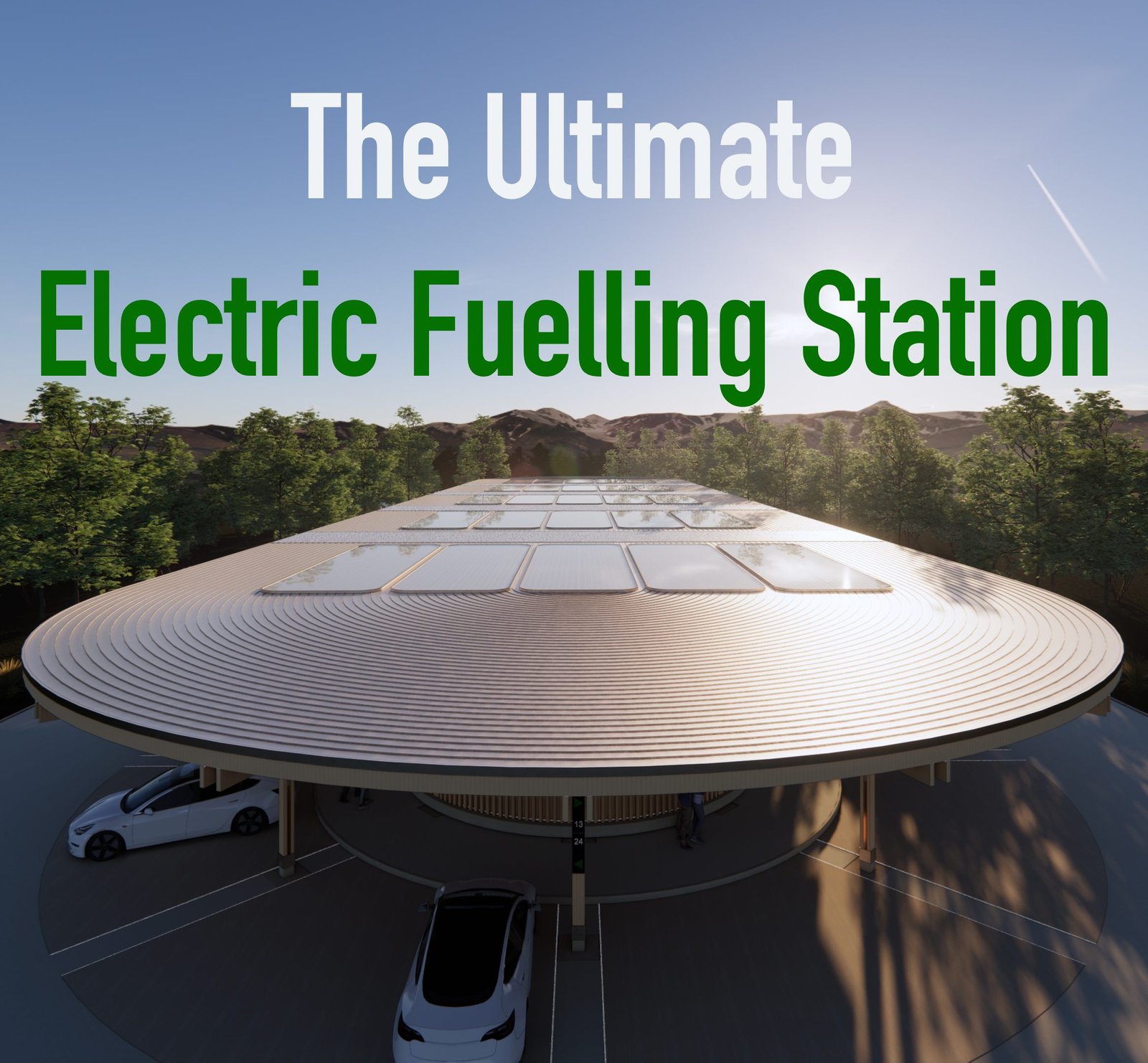By David Dodge, GreenEnergyFutures.ca
You just picked up your spanky, new electric vehicle and you’re heading out on the open road. You find a charging station, but it’s a slow charger, behind a building, with no squeegee, no washroom, and no shelter from the storm.
Electric Autonomy Canada wants to change all that so, they launched the Electric Fuelling Station of the Future design competition and put up $40,000 in prize money.
It’s not so much in your home city you need charging stations because nearly all EV drivers leave home with a full charge every day. Filling up at home is as easy as charging your mobile phone.
But, when EV drivers head out on the open road, they need consistently available, high-speed charging stations.
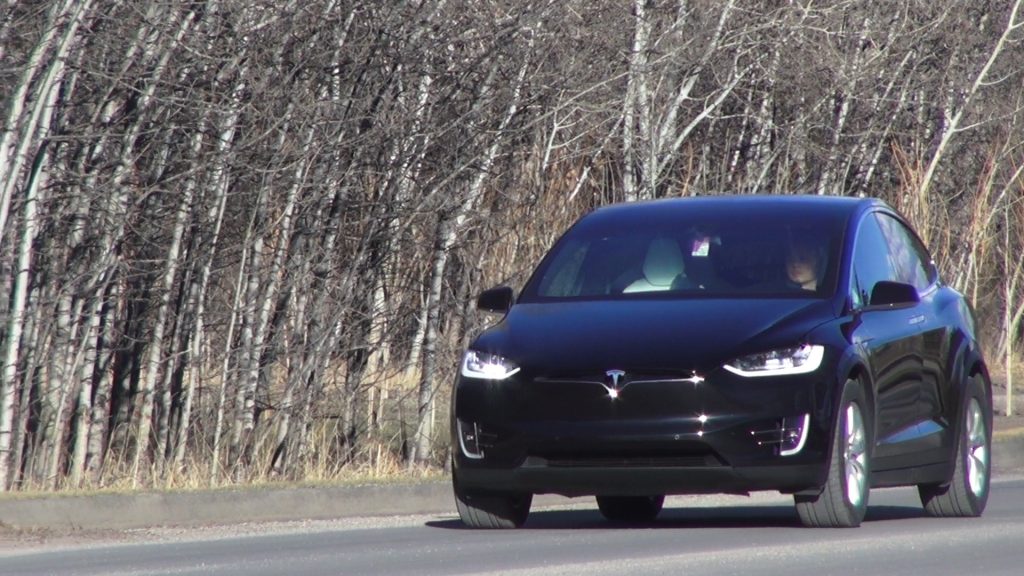
Slaying Range Anxiety with Great Charging Stations
“I think one of the biggest issues to EV adoption is range anxiety,” says Ilana Weitzman of Electric Autonomy Canada. “We are a news platform that is focused on accelerating the transition to cleaner, safer, and more affordable transportation.”
“After driving 400 kilometers, everyone needs to rest. And so, we had this idea that you not only need to recharge your car, but you also need to recharge yourself. And, so we wanted to showcase the differences between gas refuelling and electric refuelling and how that can be a positive experience,” says Weitzman.
“When you think about highway side recharging you could land there at night, be in the dark, in the cold, or have no washroom facilities. So there really is a need to think about these highway hubs or, what we’ve been calling them, roadside oasis.”
What’s becoming clear is electric vehicle drivers have very different needs than gas-fueled vehicles.
“When you have 20 or 40 minutes to recharge a car instead of three or five minutes at a gas pump, it really becomes a break on the journey. And you really have to think about how do you offer amenities?” says Weitzman.
“You move from a focus on the vehicle to a focus on the human being,” she says.
The design competition was a big hit. Electric Autonomy Canada received more than 100 entries from all over the world in their search for the ultimate electric fuelling station.
“The designs that came in were amazing,” says Weitzman. Aside from contributing to EV infrastructure, the winner picks up a $25,000 prize.
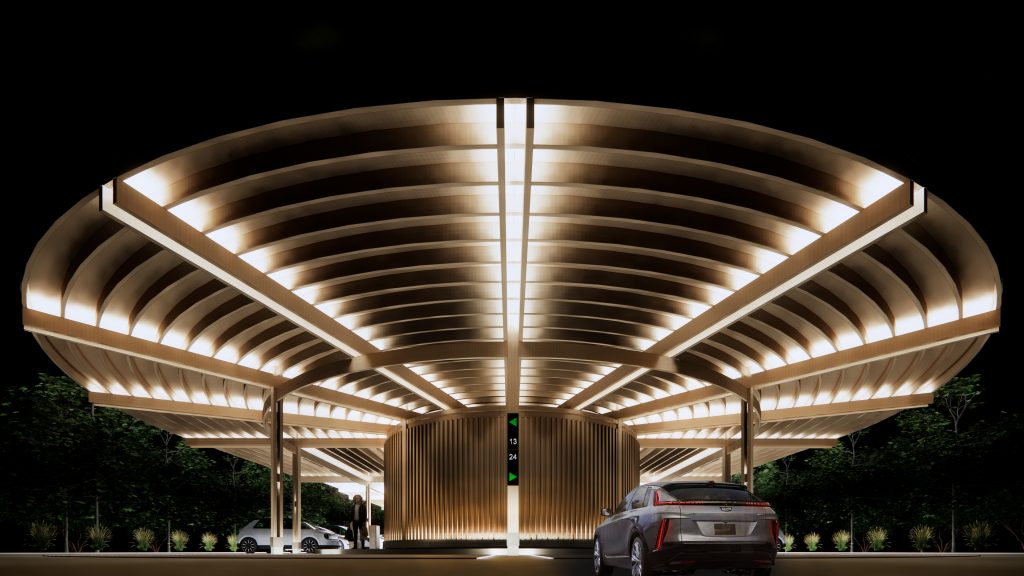
‘More With Less’
“The winner is an architect based in Edinburgh, Scotland named James Silvester and his design is called ‘More with Less’,” says Weitzman.
“And it’s Absolutely beautiful. I think that’s the first thing you notice when you imagine this station being built, that you will pull up to this curvilinear timber structure that is punctuated with courtyards.”
The design includes numerous courtyards and locations for small shops or amenities.
“You can insert a cafe in there, you can insert an arcade in there for the kids. You can insert these beautiful, gardened lounge areas where you can catch up on work or stream a movie. And right around the perimeter of the station are all the parking areas with EV charging,” says Weitzman.
It’s easy to visualize yourself spending time in this “human-focused” design. – is this a quote from Weitzman?
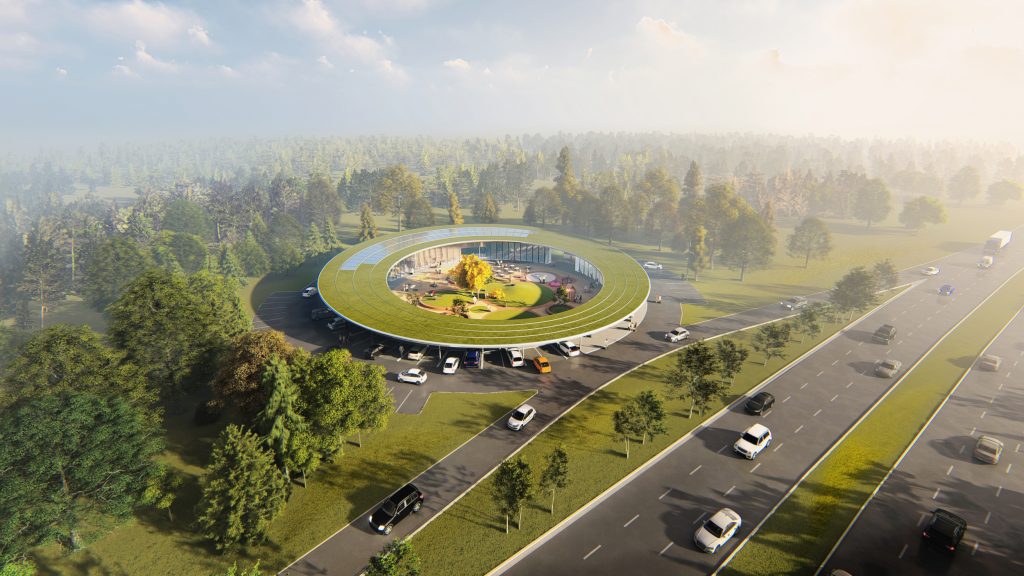
‘The Circle’
“Second prize was a Turkish architecture firm called Fabrica Architects. It’s called ‘The Circle’ and…it’s glorious. It’s this giant circular wooden canopy that is tilted on an angle and has a green roof and solar panels and nested underneath the circle are the pavilions,” says Weitzman.
The design encloses a courtyard where there could be dining, a playground for the kids or grab a coffee and relax while you catch up on work or scan social media. The circle provides an abundance of charging stations surrounding the structure.
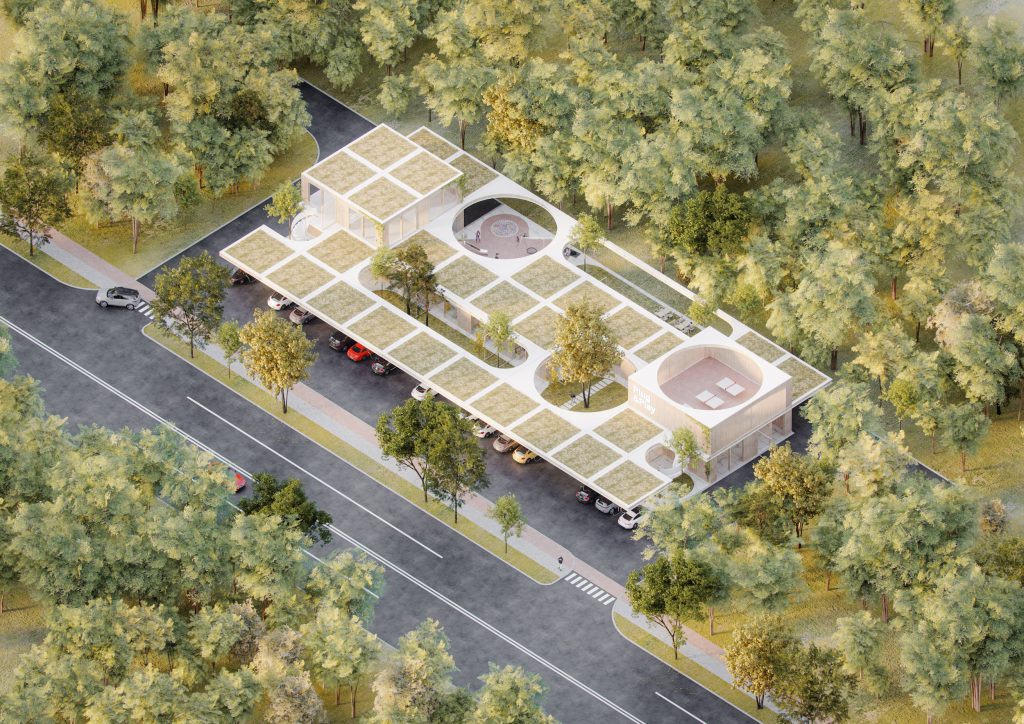
‘Plug and Play’
“The third-place winner was a Ukrainian architect named Pavlo Babiienko, based in Berlin, Germany. And ‘Plug and Play’ is his design. What’s really cool is when you look at it from the outside, it actually looks very much like your sort of retro, gas station of the past.”
This design, like all of the winning designs, includes flexible space where you can have courtyards, retail kiosks, playgrounds or coffee shops.
In case you didn’t notice, the winning designs came from other places around the world outside of Canada. But Ilana says there was an honorable mention for a Toronto designer who also created a circular timber structure.
The winning designs were so inspiring that Parkland, a sponsor of the competition, has announced they will build the winning design in British Columbia.
Parkland is a Calgary-based oil company that you might know from their ESSO, Fast Gas and On the Run brands.
The designs are inspiring and should get the creative juices flowing as demand for electric vehicle charging grows in the coming years. The demand is expected to grow quickly as EV adoption rates accelerate every year and since virtually the entire auto industry is moving to produce EVs with $515 million in investment. More than 500 new models of EVs are due out before 2025, worldwide.
Ilana Weitzman says the biggest learning from the competition is the strong integration of ensuring charging stations of the future work for cars and the humans who have 20-40 minutes to kill while they fast-charge their EVs.
You can see all of the winning designs on the Electric Autonomy Canada website.
